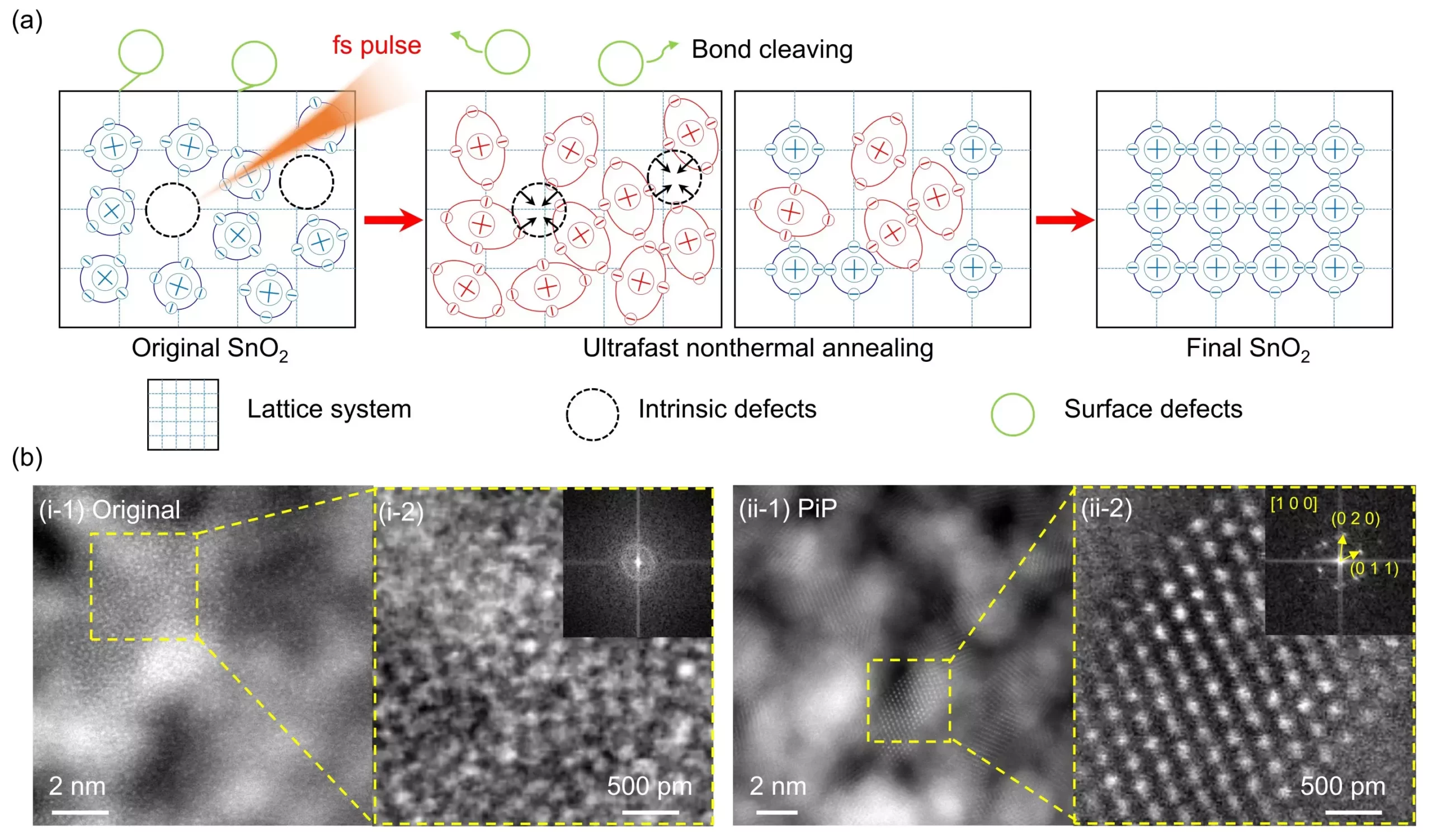Perovskite solar cells (PSCs) have gained significant attention in the field of renewable energy due to their high efficiency and low-cost production. One of the critical components in PSCs is the electron transport layer (ETL), with SnO2 being a popular choice for its excellent properties. However, the presence of defects in SnO2 can lead to carrier recombination issues at the SnO2/perovskite interface, affecting the overall performance of the solar cell.
Traditional methods such as thermal annealing and interface modification have been utilized to passivate defects in SnO2. While effective, these techniques are time-consuming, energy-intensive, and not suitable for flexible substrates. This limitation has prompted researchers to develop alternative approaches that address these challenges.
In response to the shortcomings of current passivation techniques, the Center of Femtosecond Laser Manufacturing for Advanced Materials and Devices, led by Prof. Xuewen Wang, has introduced a novel PiP strategy for SnO2 nanoparticle-based ETLs. This innovative approach leverages a home-built femtosecond laser annealing system to passivate defects in SnO2 effectively.
High-resolution transmission electron microscope analyses conducted by the research team revealed that the PiP process induces a transformation in SnO2 from the amorphous phase to the crystalline phase, improving the material’s overall crystallinity. Additionally, surface and optoelectronic characterization techniques demonstrated enhanced defect passivation in the SnO2 film after the PiP treatment.
Read More: The Outer Moons of Uranus and Neptune
The PiP technique showcased its versatility and applicability across different types of perovskite absorber layers, demonstrating significantly improved power conversion efficiency (PCE) in PSCs and perovskite solar modules (PSMs). With a PCE of up to 24.14% in PSCs and 20.26% in PSMs, the PiP technique represents a scalable and universal approach towards enhancing the performance and stability of PSCs.
Prof. Xuewen Wang expressed optimism about the commercial potential of the PiP technique, emphasizing its role in enabling efficient low-temperature manufacturing of PSCs. By addressing the limitations of traditional passivation techniques, the PiP strategy opens up new possibilities for the widespread adoption of perovskite solar cells in renewable energy applications.
The development of the Photoexcitation-Induced Passivation (PiP) strategy marks a significant breakthrough in the field of perovskite solar cells, offering a more efficient and scalable approach for enhancing device performance. As researchers continue to innovate and optimize these techniques, the future of PSCs looks brighter than ever.


Leave a Reply